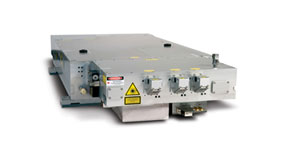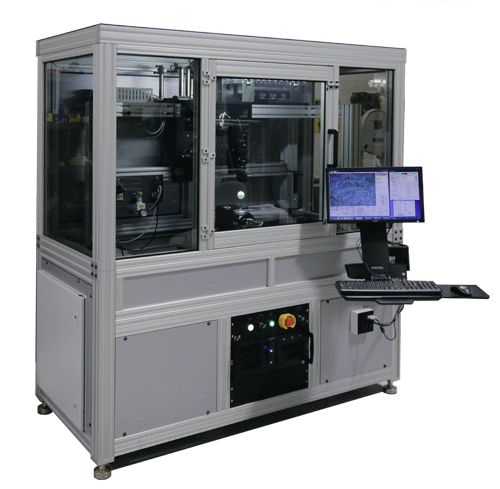Picosecond & nanosecond Lasers
Ultrashort pulse duration (sub-nanosecond) lasers are increasingly being employed in laser microfabrication applications.

USP (Ultra Short Pulse) Picosecond and Femtosecond Laser Systems
In this context, USP lasers are defined as having a pulse length less than 1 ns including picosecond (10^-12 s) and femtosecond (10^-15 s) lasers. Because of the very short pulse length, extremely high peak powers can be reached, resulting in excellent edge quality. These lasers typically run up to 100 kHz repetition rate or even 1 MHz. To put things into perspective, consider a laser with a 1 picosecond output operating at 100 kHz repetition rate. This would be like closing your eyes, blinking for 1 second and then keeping your eyes closed for four months. So, the on-time or duty cycle of these lasers is extremely small. An interesting phenomenon of USP lasers is that at VERY short pulse lengths, wavelength dependent absorption appears to be eliminated due to multi-photon effects and very high absorptions and clean material processing can be achieved using the fundamental IR wavelength. USP lasers, when used properly, can give virtually no HAZ (Heat Affected Zone) or microcracking.
The exact mechanisms of material interaction are complex and the details are still debated, but in summary short pulse lasers have pulse lengths shorter than the reaction time of the material lattice, and therefore the photons are absorbed by free valence electrons resulting in bond breaking and material ejection before heat can be transferred into the material. Longer pulse lasers tend to melt a pool of material at the interaction zone which then reacts with photons at the tail of the pulse to eject and evaporate molten material. This is accompanied by splashing and melting and, because of the longer pulse length, heat transfer into the material.
Picosecond lasers are available in multiple wavelengths because they have higher energy per pulse than fs lasers. In some materials, there is no identifiable difference between the fundamental, doubled or tripled wavelengths, so it is better to use the higher energy available in the fundamental. However, many materials do show wavelength dependence in the picosecond regime, and so there may be reasons to choose one particular wavelength over another. Additionally, basic physics still applies and smaller spot sizes are achievable with shorter wavelength light. So where does true wavelength independence occur? Probably one needs to be below 100 fs pulse length.
In general, one would want the shortest pulse length possible for the best micromachining results, but there are practical considerations. As the pulse length of a laser gets shorter, the available pulse energy is usually smaller. More pulse energy can therefore be obtained from a picosecond laser than from a femtosecond laser. Also, in general, the lasers become more expensive (especially on a $/W basis) and more difficult to use as the pulse length gets shorter. When deciding on the proper laser to use, one must take into account all considerations including cost and speed. In general, for most current applications, longer pulse lasers are ‘good enough’. Short pulse lasers are therefore used where quality concerns or other considerations outweigh cost concerns.
Laser options include:
• Lumera Super Rapid™ and Hyper Rapid™ (12 ps, 1064 nm, 532 nm, and 355 nm wavelengths
• KM Labs high power fs lasers
• Jenoptik fs laser (4 W)
• Light Conversion fs laser with three wavelengths
• Amplitude systems fs laser with three wavelengths
• Amphos 150 W fs laser

